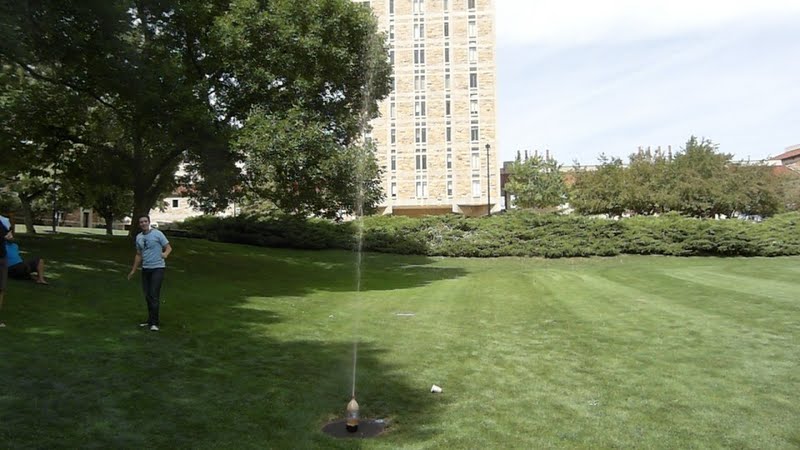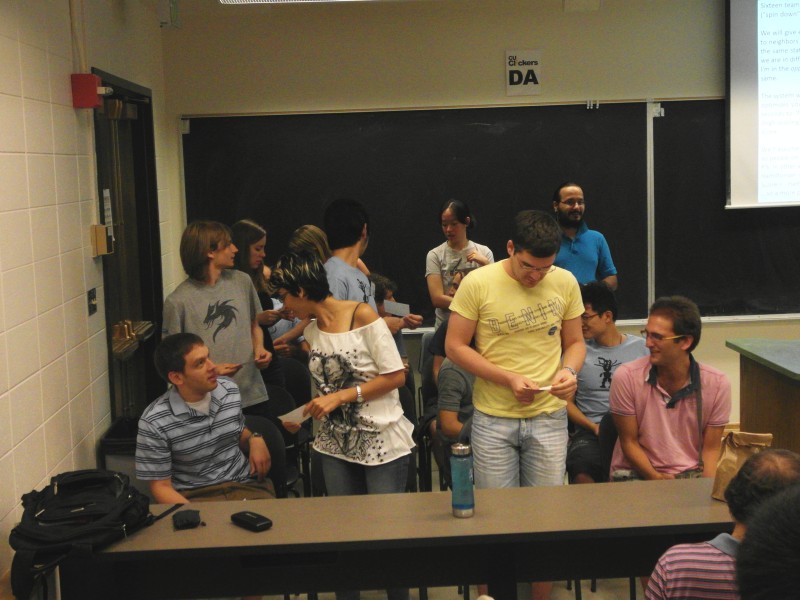tags: [ ]
Olympics in Boulder
On the last day Boulder School for Condensed Matter Physics, a month-long program for young researchers, we formed teams for competitions. Here’s one of our entries in Physics Charades: “a swimmer at low Reynolds number.”

Next, we erupted Diet Coke with Mentos, competing to make the highest fountain. A paper in the American Journal of Physics found that there are many important factors. For us, the key tricks were warming the soda beforehand and forcing the geyser through a small hole. We won that challenge handily.

Finally, each team invented a competition for the others. These are the rules of our invention, written for fellow physicists.
Our challenge: Human Spin Glass
Sixteen team members stand in a 4x4 array. Each person may stand (“spin up”) or sit (“spin down”) at will.

We will give each person a card with four small integers. These represent “couplings” to neighbors in the array. For example, a +2 at the top of the card means that if I am in the same state the person in front of me, I earn 2 points for my team. I lose 2 points if we are in different states. Likewise, a -1 on the right of the card means I earn 1 point if I’m in the opposite state from the neighbor to my right, and I lose 1 point if we are the same.
The system will be frustrated. Your challenge is to react to your neighbors in a way that optimizes your score, prioritizing couplings that offer the most points. You will have 30 seconds to “fluctuate” between sitting and standing and to “anneal” into a low-energy (high-scoring) state. When the time is up, each person will compute and report their score. Your aim is to maximize the team’s score.
We’ll assume periodic boundary conditions, so people on the edges must peer down the line. In other words, the sign convention is:
$$ H = - \sum\limits{\langle ij\rangle} J{ij}\ S_i \cdot S_j \ \text{Score} = -H $$
…so a more positive score is a better score.
Appendix: Simulation and Experiment
If each person acts simply to maximize their personal score, with no oversight or communication, this game is well modeled by a Metropolis algorithm at zero temperature. With a simple simulation, I learned that this process usually finds the ground state (highest possible score). It only takes about 10–20 moves, depending on the couplings.
I worried that the game would be too easy, that each team would find the ground state and tie. But, in reality, the crowd is confusing enough to be challenging, even with only 16 players. Notably, players optimized bonds along rows much better than they optimized bonds along columns. Conversations are easier along rows.